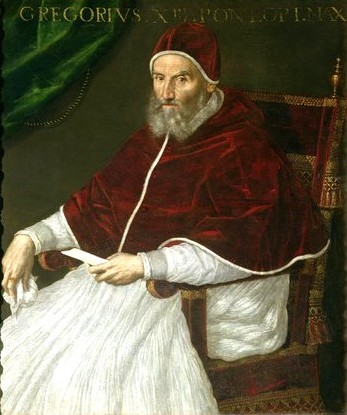Happy New Years!By the time you are reading this you are probably full of pork and sauerkraut, candy
Happy New Years!By the time you are reading this you are probably full of pork and sauerkraut, candy and sweets, champagne, beer, or wine all from the New Years festivities. Happy New Year everyone! So now of course I got to ask the question, why do we celebrate New Year on January 1st? It’s a pretty arbitrary number. Why not March 1st, or perhaps, March 25th.The Gregorian calendar used by most western countries originates with the ancient Roman calendar. Originally the ancient Romans would celebrate the new year with the spring equinox around late March, since this symbolized the end of winter and the beginning of spring, thus the start of the planting season. Since most early Romans were farmers the beginning of this season was pretty dang important so it made sense to make the new year begin at that time. The Roman calendar is a lunar calendar, meaning the months are based upon the phases of the moon. The first day of the month begins a new lunar cycle, a day which the Romans called the Calends (where the word “calendar” originates). At some point in ancient Roman history, the Romans began to celebrate new year on the calend of March (March 1st), probably just because it was a neat and even number on the calendar, unlike the spring equinox.In 153 BC the Romans began inaugurating consuls on the calend of January. A consul is kind of like a president or prime minister, except there are two of them and they only serve one year terms. At this point many Romans began celebrating the new year to coincide with this important date. Thus for the first time in history, people began celebrating New Years Day on January 1st. Some Roman’s still celebrated new years on March 1st, and knowing the Romans and their love of holidays many probably celebrated both. In ancient times it was calculated that the year isn’t 365 days long, it is 365.25 days long. This extra .25 days caused the calendar to drift out of alignment with the tropical year. Thus in 45 BC Julius Caesar instituted the Julian Calendar, which included a leap year every four years. In his new calendar, Caesar set the new year at January 1st, so its apparent that the holiday had been cemented as Jan. 1st by 45 BC.Throughout Roman history January 1st remained the new year, a tradition which spread all over Europe as the Roman Empire expanded. Then in 567 AD after the fall of the Roman Empire, the Catholic Church held the Second Council of Tours to decide upon a number of policy reforms. Among them was the calendar, and when new year should be celebrated. The new year was changed from January 1st, to March 25th, primarily to celebrate the Feast of the Annunciation, when the archangel Gabriel informed Mary that she would give birth to Jesus. March 25th continued to be the new year throughout the Middle Ages and Renaissance. Remember how Caesar institute the Julian calendar to correct the problem of the calendar drifting? Well as it turns out the tropical year is not 365.25 days long, it’s more like 365.242 days long. While this may not seem like much, again the calendar began to drift, gaining about a day every 128 years. Hence why Orthodox Christians, who still use the Julian Calendar, celebrate Christmas on January 7th. In order to fix this problem, Pope Gregory XIII commissioned a project to re-adjust when leap years were to be held. The new Gregorian calendar still has a leap year every four years, however 3 leap years are eliminated every four centuries. Years that are be divisible by 4 are be leap years, except for years that are divisible by 100. As part of the new calendar, new years was one again moved to January 1st. Not because of ancient Roman consuls, but to celebrate the Feast of the Circumcision of Christ. Jesus was cricumcised eight days after his birth, thus eight days after Christmas is January 1st. Of course Jesus probably wasn’t born on December 25th, how December 25th became Christmas is a totally different story.The new Gregorian calendar was accepted by Catholic countries all over Europe, however most Protestants rejected the calendar because of course they did want to do as the Catholics do. Over time as the calendar drift of the Julian Calendar worsened, most realized that something had to be done. By the mid 18th century, almost all Western European and Scandinavian countries adopted the Gregorian Calendar. Eastern European countries held out until the early 20th century. With the adoption of the Gregorian Calendar, so too did they adopt January 1st as New Years Day. -- source link
#history#gregorian calendar#julian calendar#ancient rome#ancient history#new years



